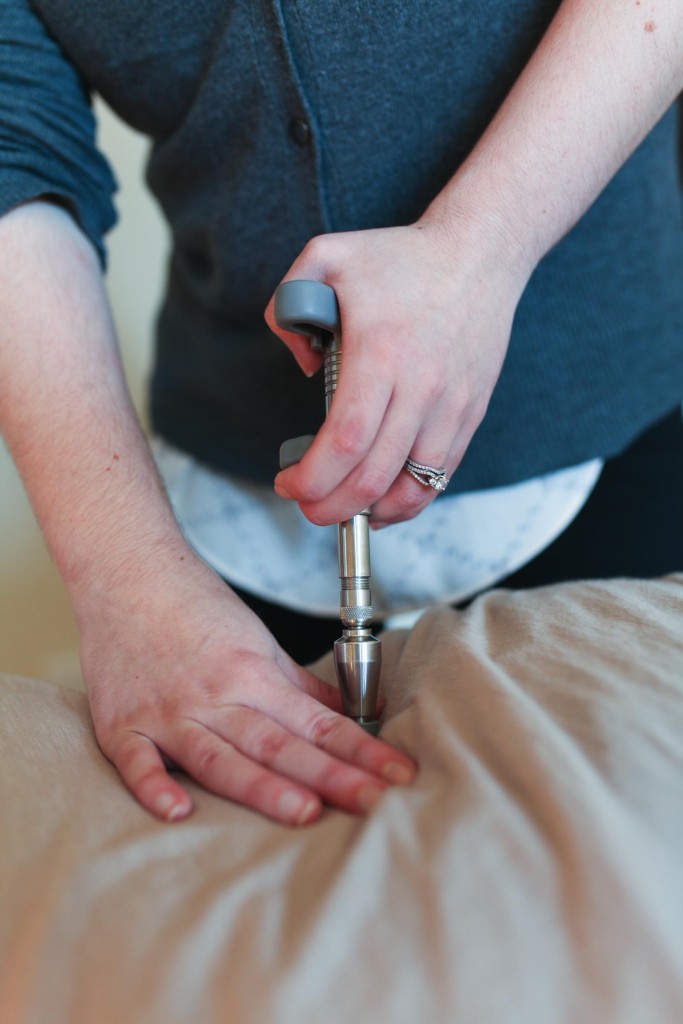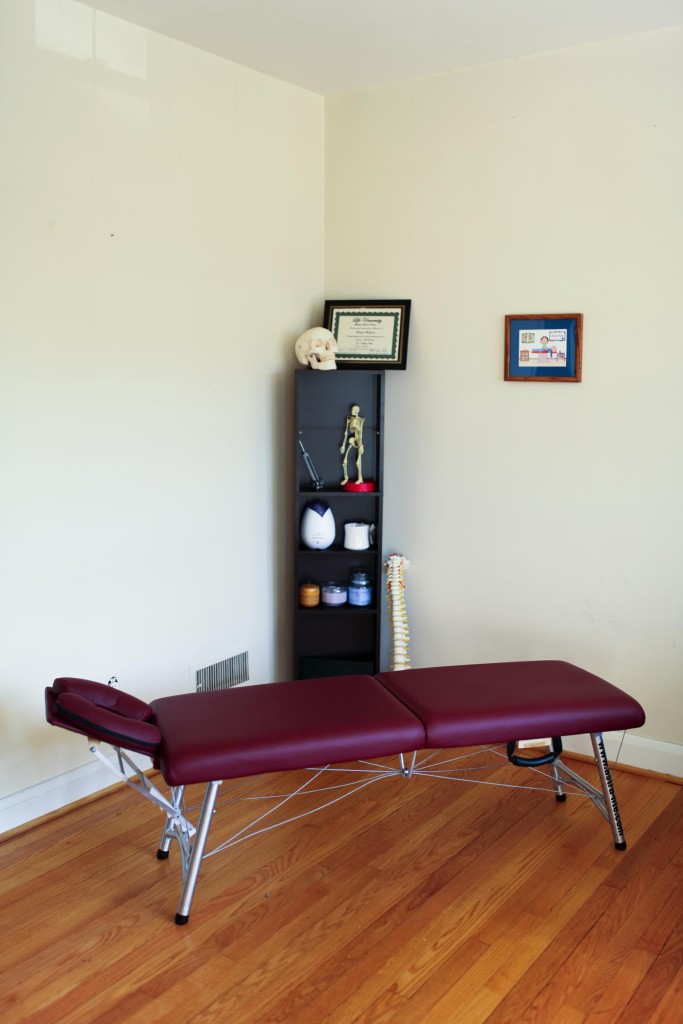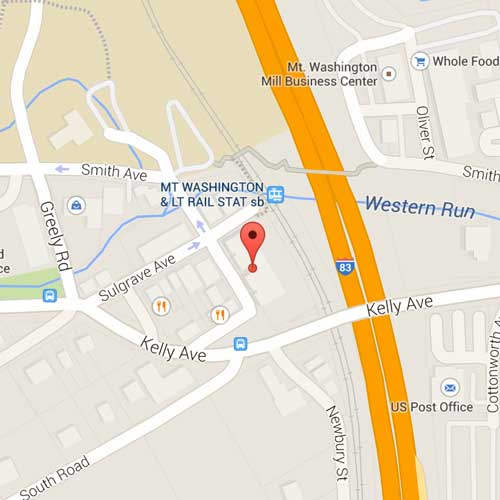 Activator Methods Technique
Activator Methods Technique
The Activator Methods Technique is Dr. Pam’s go-to for adjusting. The Activator is small instrument (think a miniature pogo stick) that is used in place of the hands to move a bone that is not aligned properly. It achieves the same result as adjusting by hand, but without moving a joint into “tension”. This is a great alternative for people who are scared of the “popping” sound that comes with a traditional manual adjustment. It is also well-suited for children, the elderly, and working with joints in the arms and legs.
For more information, please visit the Activator Methods website (https://www.activator.com)
 Diversified (Traditional Manual Adjusting)
Diversified (Traditional Manual Adjusting)
This is the technique people typically tend to envision when they picture a chiropractic adjustment. It involves using the doctor’s hands to take an individual joint to tension and then making a quick movement to move the bone at that level back into place. Despite the appearance and sound that often accompanies this type of adjustment (a click or pop), the adjustment is surprisingly gentle and very controlled. A manual adjustment is not about how big or strong the doctor is, but how quickly and specifically the move she makes is! Dr. Pam adapts the analysis of the Activator technique to determine where to apply a manual adjustment, so there is no loss of specificity.
 Thompson/Drop Table
Thompson/Drop Table
Thompson Terminal Point Technique is known for it’s use of “drop” tables. These are tables that have sections that are raised and then lower quickly (about a half inch) to assist the doctor in making the necessary adjustment. This is a good technique for those who are a little bit apprehensive about a traditional manual adjustment, but may prefer a little more weight behind their adjustment than is provided by an Activator adjustment.
A great explanation of Thompson Technique can be found at http://www.epainassist.com/manual-therapy/chiropractic-treatment/thompson-terminal-point-technique-or-thompson-drop-table-technique
Sacro-Occipital Technique (SOT)
This is an incredibly gentle but complex technique that looks at the body as a moving system that is anchored by the top and bottom of the spine (the occiput and the sacrum). By looking at distortions in the relationship between these bones and their effects on the body as a whole, the doctor is able to analyze the Cranial Sacral Respiratory Mechanism. Adjustments using SOT often rely on the use of gravity and blocks along with the patient’s breath to make full-system changes. Dr. Pam’s favorite aspect of SOT, however, is cranial adjusting, which can be particularly helpful with children and adults with a variety of concerns.
For more on this technique, please visit the SOTO-USA website (http://www.sotousa.com/wp/?page_id=14959)
Network
Dr. Pam will use the basics of Network Spinal Analysis on children with special needs. Sometimes, even the gentlest low-force adjustment is too much for an over-active nervous system to handle. The benefit of Network is that it is a non-force technique that looks at the spinal structure as a spring that may be too tightly coiled in some cases. Network technique allows the patient to unwind the tension on the spinal cord at their own pace. It looks very different from traditional adjusting, but the results speak for themselves!
For a more in-depth demonstration of Network Spinal Analysis, please visit the founder of the technique’s seminar site, http://www.wiseworldseminars.com
Webster Technique
This is the technique that brings many pregnant women to chiropractic care. Webster’s Technique is often falsely attributed with directly affecting baby’s position in utero. In reality, we work specifically with mom’s pelvis and sacrum and the surrounding muscles and ligaments to encourage proper biomechanics and nervous system function. The actual method of adjusting utilizes any number of techniques already described along with myofascial work. It is incredibly gentle and safe for both mom and baby. It’s amazing to see what happens when the body is in it’s proper alignment!
